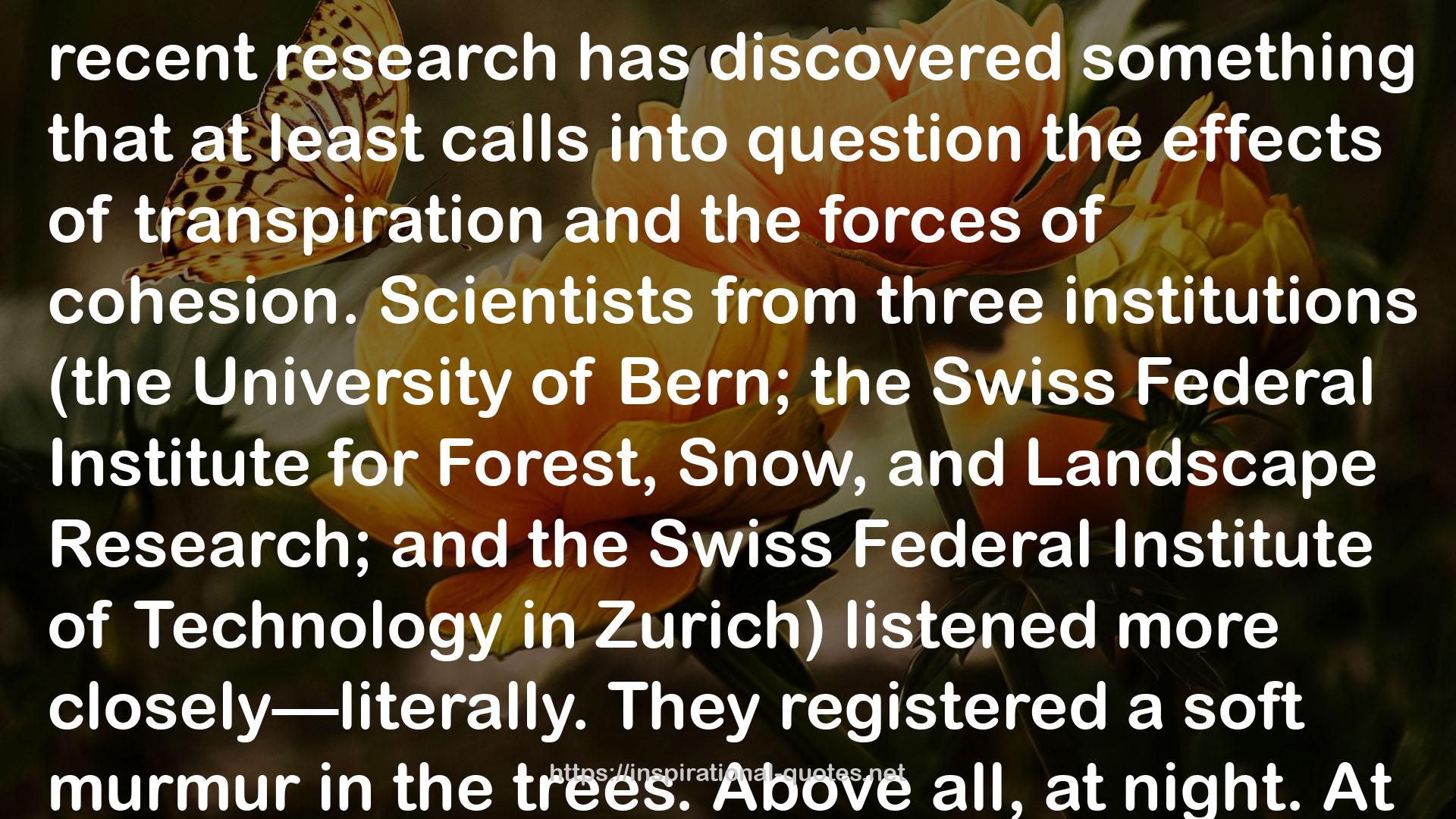" recent research has discovered something that at least calls into question the effects of transpiration and the forces of cohesion. Scientists from three institutions (the University of Bern; the Swiss Federal Institute for Forest, Snow, and Landscape Research; and the Swiss Federal Institute of Technology in Zurich) listened more closely—literally. They registered a soft murmur in the trees. Above all, at night. At this time of day, most of the water is stored in the trunk, as the crown takes a break from photosynthesis and hardly transpires at all. The trees pump themselves so full of water their trunks sometimes increase in diameter. The water is held almost completely immobile in the inner transportation tubes. Nothing flows. So where are the noises coming from? The researchers think they are coming from tiny bubbles of carbon dioxide in the narrow water-filled tubes.30 Bubbles in the pipes? That means the supposedly continuous column of water is interrupted thousands of times. And if that is the case, transpiration, cohesion, and capillary action contribute very little to water transport. "
― Peter Wohlleben , The Hidden Life of Trees: What They Feel, How They Communicate: Discoveries from a Secret World
